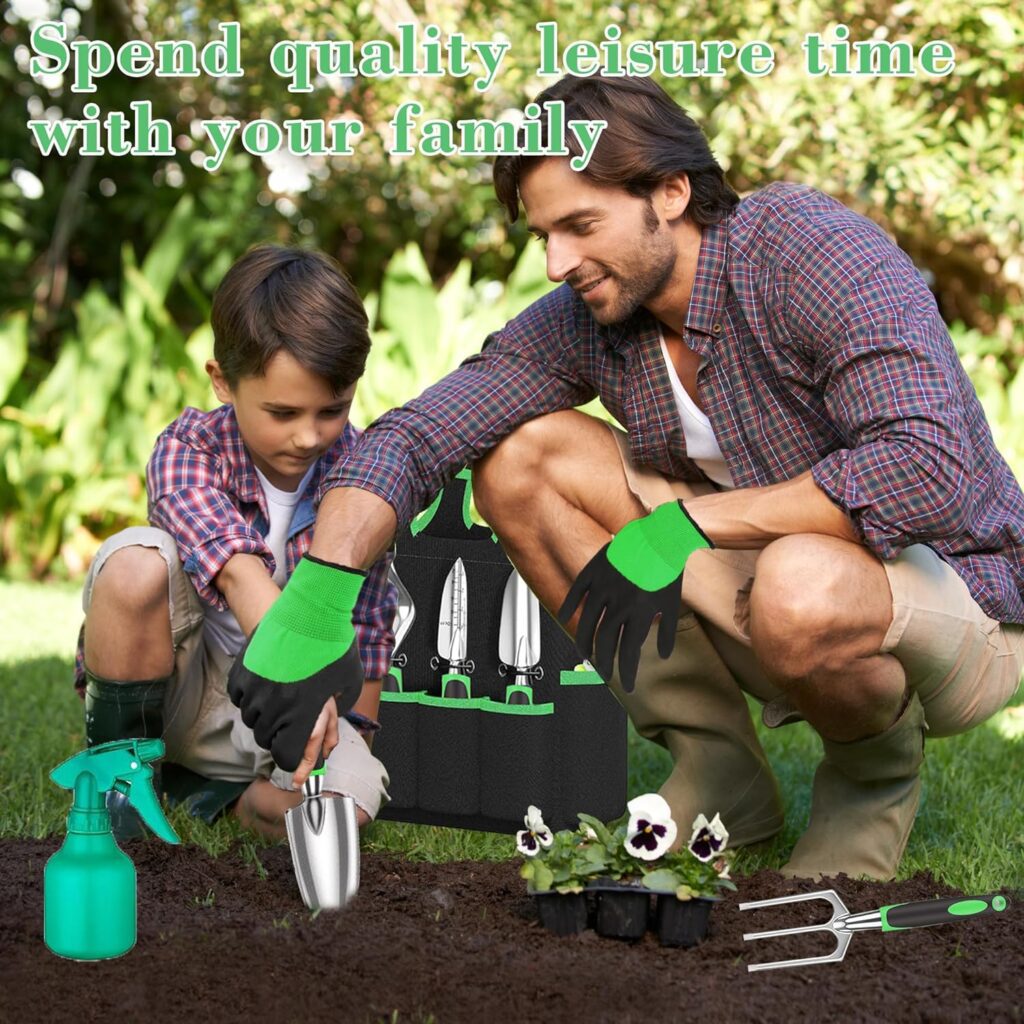Table of Contents
Welcome!
Whether you’re a seasoned green thumb or a budding gardener, this guide is designed to help you create a flourishing garden right in your own backyard. Gardening isn’t just about beautifying your space—it’s about cultivating a deeper connection with nature, providing a sense of accomplishment, and even enhancing your well-being through the simple joys of growing your own plants.
In this checklist, we’ll walk you through every step of the journey from planning your garden to enjoying the lush, vibrant results of your labor. You’ll learn how to select the best location, choose plants that will thrive, use the right tools for success, and handle garden maintenance with ease. We promise high results and an engaging experience that might just turn your gardening hobby into a lifelong passion.
So, grab your gardening gloves, and let’s dig into the essentials of creating and nurturing your home garden.
Garden Planning
The foundation of a successful home garden begins with careful planning. Selecting the right spot and designing your garden layout are crucial steps that will affect everything from plant health to garden maintenance.
Choosing the Right Location: Your garden’s location is pivotal. Look for a spot that receives adequate sunlight daily—most vegetables and flowers need at least six hours of direct sunlight to thrive. Consider the proximity to a water source and protection from harsh winds. The soil quality is also critical; well-draining, fertile soil is ideal for most plants.
Designing Your Layout: Once you’ve found the perfect spot, think about the layout. How much space do you want to dedicate to your garden? What kind of plants do you wish to grow? Group plants with similar water and sun requirements together to simplify care. If you’re limited on space, consider vertical gardening options such as trellises or hanging planters.
Planning your garden with these factors in mind will help ensure that your plants have the best environment to grow and that you have a garden that’s both beautiful and functional. This early stage of garden planning sets the stage for a rewarding gardening experience.
Every gardener needs the right set of tools to start their garden on the right foot. Having the essential tools at your disposal can make the difference between cumbersome work and an enjoyable gardening experience. Here’s a guide to the must-have gardening tools:
Garden Tool Set: A basic garden tool set should include a spade, trowel, pruners, and a rake. These tools will help you with everything from digging and planting to pruning your plants and raking the soil. Invest in high-quality tools that will last many seasons.
Watering Can or Hose: Proper watering is crucial for plant health. A watering can with a long spout provides precision, allowing you to water exactly where needed without soaking the foliage unnecessarily. For larger gardens, a hose with a spray attachment might be more efficient.
Gloves: Protect your hands from thorns, chemicals, and dirt with a good pair of gardening gloves. Look for gloves that are both durable and comfortable, allowing for flexibility and a good grip.
Wheelbarrow: If you have a larger garden, a wheelbarrow can be indispensable for moving soil, compost, and plants. It saves time and reduces the strain on your back.
Equipped with these essential tools, you’re ready to tackle the physical aspects of gardening with ease and comfort. Proper tools not only simplify the process but also enhance your gardening efficiency, allowing you more time to enjoy the creative aspects of gardening. Next, we’ll explore how to take care of your plants and ensure they thrive.

Plant Care
Caring for your plants properly is the key to a thriving garden. From the initial planting to ongoing maintenance, understanding the needs of your plants will ensure they grow healthy and strong.
Planting Techniques: Start by reading the planting instructions specific to each type of plant you have chosen. Some plants prefer deep soil, while others require shallow planting. Ensure that each plant has enough space to grow without overcrowding, as this can lead to moisture and nutrient competition.
Watering: The right watering approach can make a significant difference. Most plants prefer deep, infrequent watering that encourages root growth, as opposed to shallow, frequent watering. Early morning is typically the best time to water, reducing evaporation and giving plants ample moisture to face the day.
Feeding: Regular feeding can help your garden flourish. Use a balanced fertilizer that suits the specific needs of your plants, whether they are flowering plants, vegetables, or shrubs. Organic options like compost or manure can also enrich the soil and support healthy plant growth.
Pruning and Deadheading: Regular pruning helps to maintain plant health and vigor. Removing dead or diseased branches will encourage new growth and improve air circulation. For flowering plants, deadheading spent blooms can promote further flowering.
Weed and Pest Control: Keep an eye out for pests and diseases. Natural remedies, such as neem oil or insecticidal soap, can be effective for controlling many common garden pests. Regular weeding also helps prevent invasive species from taking nutrients away from your plants.
By implementing these care techniques, you’ll be well on your way to maintaining a lush and productive garden. Proper plant care not only enhances the appearance of your garden but also contributes to the overall health and longevity of your plants. Up next, we’ll delve into the satisfying process of harvesting your garden and enjoying the fruits of your labor.
Enjoying Your Garden
After all the planning, planting, and care, it’s time to enjoy the fruits of your labor. Harvesting your garden not only provides the tangible rewards of your efforts but also brings a deep sense of satisfaction and connection to the cycle of nature.
Harvesting Tips:
- Harvest your produce at its peak for the best flavor and nutritional content. Vegetables like tomatoes, cucumbers, and peppers should be picked when they’re fully colored but before they start to soften.
- For herbs, morning is the ideal time to harvest, right after the dew has evaporated but before the sun becomes too hot, preserving their aromatic oils.
- Use the right tools to cut fruits and vegetables from the plants to avoid damaging both the produce and the plants.
Using Your Harvest:
- Freshly picked fruits and vegetables can be used immediately in your cooking, enhancing meals with unmatched taste and freshness.
- Consider preserving excess produce through canning, freezing, or drying to enjoy your garden’s bounty throughout the year.
- Don’t forget the joy of sharing your harvest with friends, family, or local food banks, spreading the benefits of your garden to the community.
Garden Leisure:
- Beyond harvesting, your garden can be a place of relaxation and leisure. Add seating like a comfortable garden bench or a hammock to create a tranquil spot for enjoying the beauty and tranquillity of your garden environment.
- Consider adding features like bird feeders or a small water fountain to attract wildlife, making your garden a lively and delightful space.
Next Steps in Gardening:
- Reflect on what plants did well and which ones didn’t thrive as expected. Use this knowledge to plan your next gardening season, possibly introducing new plant varieties or adjusting planting locations.
- Continue learning and experimenting with different gardening techniques and styles to keep your hobby fresh and engaging.

As you nurture your garden, it in turn nurtures you, offering endless opportunities for growth, learning, and enjoyment. Whether you’re clipping fresh herbs for a meal, lounging among the flowers, or planning your next season’s garden, there’s always something new to appreciate and explore. Thank you for following this guide, and may your garden continue to flourish and inspire!
🌿 Curious to Dig Deeper? Explore more gardening tips and tricks to transform your green space! 🌼 Discover more articles here!







